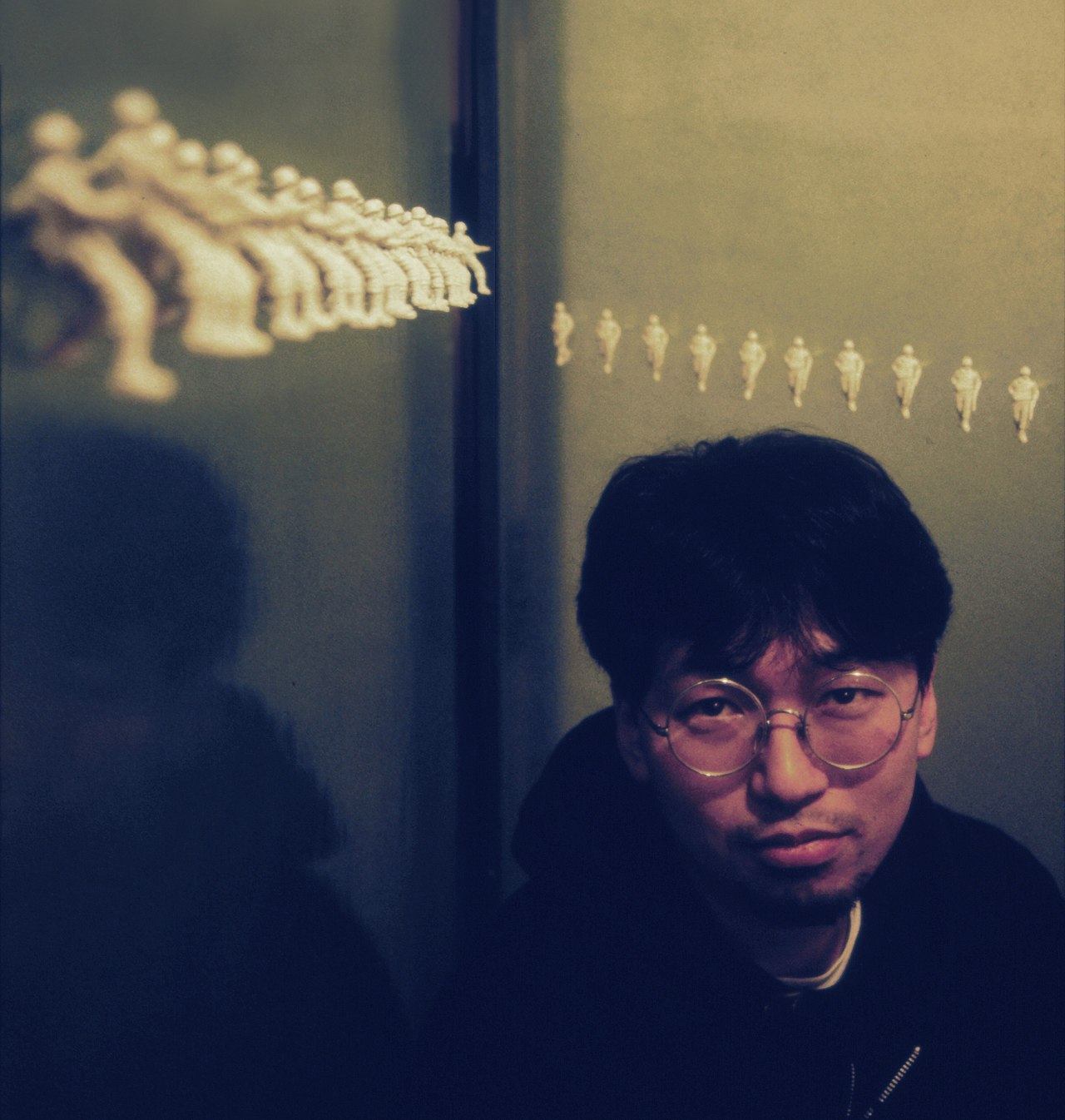Drawing from traditional Japanese painting, sci-fi, anime, and the global art market, Takashi Murakami creates paintings, sculptures, and films populated by repeated motifs and mutating characters of his own creation. His wide-ranging work embodies an intersection of pop culture, history, and fine art.

Earlier Life
Murakami earned a BA, MFA, and PhD from Tokyo University of the Arts, where he studied nihonga (traditional Japanese painting). In 1996 he established the Hiropon Factory, a studio/workshop that in subsequent years grew into an art production and artist management company, now known as Kaikai Kiki Co. Ltd.
Since the early 1990s Murakami has invented characters that combine aspects of popular cartoons from Japan, Europe, and the US—from his first Mr. DOB, who sometimes serves as a stand-in for the artist himself, to various anime characters and smiling flowers, bears, and lions. These figures act as icons and symbols—hosts for more complex themes of violence, technology, and fantasy.
Artistic Influence
In 2000 Murakami curated Superflat, an exhibition featuring works by artists whose techniques and mediums synthesize various aspects of Japanese visual culture, from ukiyo-e (woodblock prints of the Edo period) to anime and kawaii (a particular cuteness in cartoons, handwriting, products, and more). With this exhibition, Murakami advanced his Superflat theory of art, which highlights the “flatness” of Japanese visual culture from traditional painting to contemporary subcultures in the context of World War II and its aftermath.

Murakami's work extends to mass-produced items such as toys, key chains, and t-shirts. In 2002 he began a multiyear collaboration with Marc Jacobs on the redesign of the Louis Vuitton monogram. Murakami then took the radical step of directly incorporating the Vuitton monograms and patterns into his paintings and sculptures. While Murakami's imagery may appear to present unprecedented characters and forms, many contain explicit art historical references, and some are even direct contemporary updates on traditional Japanese works.
In 2009 Murakami and the esteemed art historian Nobuo Tsuji began a creative dialogue centered on a group of Japanese artists known as the Edo eccentrics. This collaboration led to an exhibition at the Museum of Fine Arts in Boston in 2017, for which Murakami and Tsuji selected Japanese works from the museum's collection and showed them alongside works by Murakami. The latter included Dragon in Clouds—Red Mutation: The version I painted myself in annoyance after Professor Nobuo Tsuji told me, “Why don't you paint something yourself for once?” (2010), a red monochrome version of the famous eighteenth-century painting Dragon and Clouds by Soga Shōhaku.
Following the Tōhoku earthquake of 2011 and the subsequent nuclear crisis at Fukushima, Murakami began deeply exploring the impact of historical natural disasters on Japanese art and culture. In his 2014 Gagosian exhibition at West 24th Street in New York, In the Land of the Dead, Stepping on the Tail of a Rainbow, he created an immersive installation of eclectic arhats; deliquescing clones of his fictional creature Mr. DOB; and karajishi, the mythic lions that guard Japanese Buddhist temples, that visitors entered through a replica of a sanmon (sacred gate).
Not only does Murakami merge different time periods, styles, and subject matter in his work, but his approach to art crosses the boundaries between gallery, studio, art fair, and media as well. Along with creating paintings and sculptures, he has hosted art fairs for emerging artists, curated exhibitions, and made films featuring his many characters and motifs. Combining fantasy, science, and history, he shows that none of these categories can be considered in isolation.
